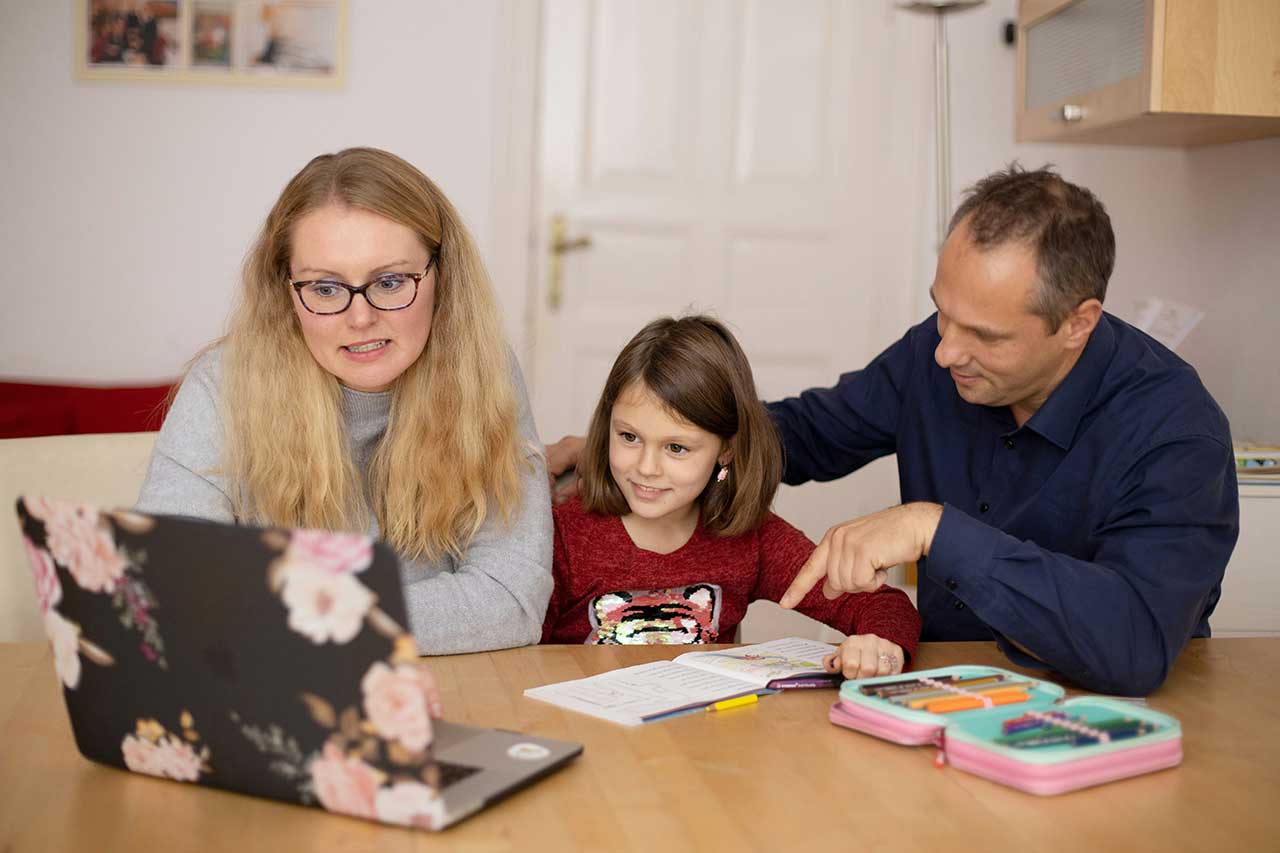The Benefits of Applied Behavior Analysis for Autism Spectrum Learners
As is true of all learners, autistic learners have different abilities and unique needs. Some are significantly impacted by an autism diagnosis and benefit from intensive and consistent therapeutic interventions, and others are impacted to a lesser degree and need more general support. No matter where an individual falls on the spectrum, an individualized learning plan is beneficial to meeting each person where they are in order to help them develop skills, meet goals, achieve their full potential, and lead fulfilling lives.
Among the different therapeutic approaches to supporting autistic learners, Applied Behavior Analysis (ABA) is considered the most effective treatment for Autism Spectrum Disorder (ASD) for a number of reasons:
- Evidence-based
- Comprehensive and individualized
- Focused on measurable outcomes
- Versatile and adaptable
- Ideal for early intervention
- Effective across all ages
- Accessible; typically covered by insurance
In this article, we’ll explain what ABA therapy is, explore why ABA is beneficial for learners with autism, consider the impact of individualized learning, and look at the recommended age range for ABA Therapy.

What is ABA Therapy for Autism?
Applied Behavior Analysis therapy is a structured and evidence-based intervention aimed at improving behaviors, skills, and outcomes in any individual; it is not only beneficial for autistic learners. ABA therapy can be applied universally and it is common to see Behavior Analysts working in a variety of settings, including in nursing homes, adult facilities, and even corporate environments. Data collected over the years regarding ABA and autism has become so paired that we now associate the two – to the point that insurance often requires a diagnosis to approve it.
At its core, ABA therapy involves the systematic application of behavioral principles to analyze, understand, and modify behavior patterns. Therapists utilize a variety of techniques to teach new skills and reduce challenging behaviors, including:
- Positive reinforcement
- Prompting (i.e. verbal prompts, physical gestures, visual cues)
- Shaping (i.e. breaking down a desired behavior into smaller, manageable steps)
- Fading (i.e. gradually reducing prompts or supports)
Therapy is typically delivered in structured sessions, often in one-on-one or small group settings, where therapists provide targeted instruction and support. ABA therapy is designed to be transferable to real-world scenarios and can be delivered in clinical settings, schools, homes, communities, and other environments.
Central to ABA therapy is the emphasis on data collection and analysis to track progress objectively and inform treatment decisions. Therapists continuously assess behaviors, set measurable goals, and adjust interventions based on individual responses.
Benefits of ABA Therapy
The most significant benefit of ABA therapy is its high degree of individualized learning. Treatment plans are tailored to the specific needs, abilities, preferences, and goals of each learner in regard to:
- Communication
- Social interaction
- Academic skills
- Self-regulation
- Self-care
- Independence
- Building tolerance
By focusing on functional skills relevant to everyday life and across settings, ABA therapy aims to promote autonomy, self-sufficiency, and empowerment.

Components & Customization: ABA Therapy Explained
Let’s take a deeper look at some ways in which ABA therapy is tailored to individual needs, along with some examples. Overarching goals for each autistic learner are collaboratively set with input, as appropriate, from the learner, their family, and their teachers, caregiver, or employer.
- Assessment & Goal Setting
Comprehensive assessments identify a learner’s strengths, areas of need, and developmental priorities. Based on this assessment, specific, measurable, and achievable goals are set for intervention. For example, if a child struggles with social communication, the goal might be to respond to or ask questions of others.
- Target Behaviors
ABA therapy targets relevant and meaningful behaviors that are identified by the caregiver and/or the individual, if they are able to communicate, during the assessment and interview process. These targets typically aim to bolster independence, social validity, and overall well-being. An important example that is applicable to all learners is to teach assent. A learner must be able to tell their therapist (and anyone else) “no” when they are uncomfortable or unwilling to engage in a behavior.
Another example would be to help an autistic teenager who wants to improve their social skills by working on responding to cues. If an older learner chooses to work on social skills such as eye contact, this can be addressed in a treatment plan as well, however, due to the overwhelming feedback of the autistic population to remove eye contact as a targeted goal, this would only be addressed if it is learner-initiated.
These and other behavior targets are practiced during therapy sessions.
- Modality of Instruction
ABA therapy utilizes various instructional methods tailored to the individual’s learning style and preferences. For example, some learners respond better to visual prompts and schedules, while others benefit from hands-on activities or auditory cues. Therapists adapt their teaching strategies accordingly to maximize engagement and learning.
- Reinforcement Preferences
ABA therapy considers the individual’s preferences for reinforcement, ensuring that rewards are motivating and meaningful. Reinforcers can vary widely depending on the learner’s interests, such as praise, tokens, access to preferred activities, or tangible rewards like toys or snacks. For instance, if a child is motivated by playing with a favorite toy, that toy may play a reinforcement role for completing tasks or exhibiting targeted behaviors.
- Generalization & Maintenance
ABA therapy incorporates strategies to promote the generalization of skills across different settings, situations, and people. Therapists ensure that skills learned in therapy sessions are applied in real-life contexts. For example, if a child learns to follow instructions during a session, the therapist may collaborate with teachers and parents to reinforce and generalize this skill in the classroom and at home.

The Transformative Impact of ABA Therapy
ABA therapy can impact autistic learners in profound ways. Most frequently, the effects of ABA therapy are observed in communication breakthroughs, social skill development, academic progress, behavioral self-regulation, and independence in daily living. Of course, success will look different for every learner – let’s consider some examples:
- Communication Breakthroughs
An individual who was previously nonverbal or had limited communication may begin to express their needs, wants, and thoughts via their preferred method, whether that’s an AAC (Augmentative & Alternative Communication) device, PECS (Picture Exchange Communication System), or through sign or vocal language. Communicating effectively enhances an individual’s ability to interact with others, participate in social activities, and navigate daily life more independently.
- Social Skill Development
An individual who struggles with social interactions and making friends may start to demonstrate improved social skills, like initiating conversation, giving attention to a speaker, taking turns, and understanding social cues. This helps to build meaningful relationships, form friendships, and feel more connected to others.
- Academic Progress
Those who face difficulties in academic settings, like focusing attention, following instructions, or completing tasks, may see positive improvement from targeted interventions and therapeutic support – such as developing study habits, organizational skills, and problem-solving strategies.
- Behavioral Self-Regulation
An autistic learner who exhibits tantrums, aggression, or self-injury may learn alternative, adaptive ways to cope with frustration, anxiety, or sensory overload. Through positive reinforcement of replacement behaviors, there is often a natural decrease in maladaptive behaviors. These might include such self-regulation skills as requesting breaks, using calming techniques, or seeking help.
- Independence in Daily Living
An individual with autism who learns essential life skills, such as personal hygiene, meal preparation, household chores, and community navigation may gain independence in daily living tasks and experience increased autonomy, confidence, and self-esteem.
- Tolerance Building
It is common for autistic learners to resist various situations and stimuli, like making transitions between activities, facing changes in routine, needing to complete non-preferred tasks, and being subject to such sensory experiences as loud noises or bright lights, social interactions, or unfamiliar environments. Building tolerance to these challenges takes time and practice. Steps typically include the gradual introduction of a less preferred situation or stimulus, helping the learner build tolerance through the use of visual schedules, supportive strategies, goal setting, and positive reinforcement. Additionally, learners are taught to self-advocate and develop self-regulation strategies in addition to building tolerance. In time, the learner may be able to generalize their tolerance beyond the therapy setting.

Age Range & Early Intervention
While interventions can be beneficial at any age, ABA therapy can begin as early as infancy or toddlerhood, most often around 18 months to two years of age, and extends through childhood, adolescence, and adulthood.
Early intervention is considered crucial for autistic learners because it offers the opportunity to address developmental delays and challenges during a critical period of brain development. At a young age, there is potential to facilitate positive outcomes by capitalizing on the brain’s neuroplasticity – the ability to form new connections and reorganize neural pathways in response to learning and experience.
Here are some key reasons why early intervention is so significant:
- Maximizing Developmental Potential
Early intervention aims to address developmental delays and deficits in areas such as communication, social skills, behavior, and adaptive functioning during a period when the brain is most receptive to learning and change.
- Reducing Developmental Disparities
By providing structured support and skill-building opportunities at a young age, early intervention programs strive to narrow the gap in developmental trajectories, fostering greater independence, inclusion, and quality of life.
- Enhancing Family Support and Well-Being
By offering education, resources, and practical strategies for managing behaviors and promoting development, early intervention programs empower families to provide effective support and advocacy for their loved ones with autism.
ABA Therapy at A Bridge to Achievement
At A Bridge to Achievement, we offer ABA therapy for early learners through adulthood. Additionally, we offer targeted, comprehensive ABA programs for two age groups:
- The Building Bridges program is for young learners preparing for Kindergarten.
- BRIDGES (Building Relationships, Independence, Determination, Group & Essential Skills) is for preteens, teenagers, and young adults. The BRIDGES program is available to learners into adulthood if they demonstrate a need for support at the level provided, don’t have behaviors that would prevent skill building in a clinical setting, and are insurance-approved.
Additionally, A Bridge to Achievement is excited to begin offering social skills programs for learners ages 3-21. Learners will participate in best-fit groups based on age, developmental appropriateness, and interests in order to build meaningful social skills and friendships.
If you have questions about ABA therapy or our programs specifically, or you are ready to request services, please get in touch with ABtA team! Support starts here.





